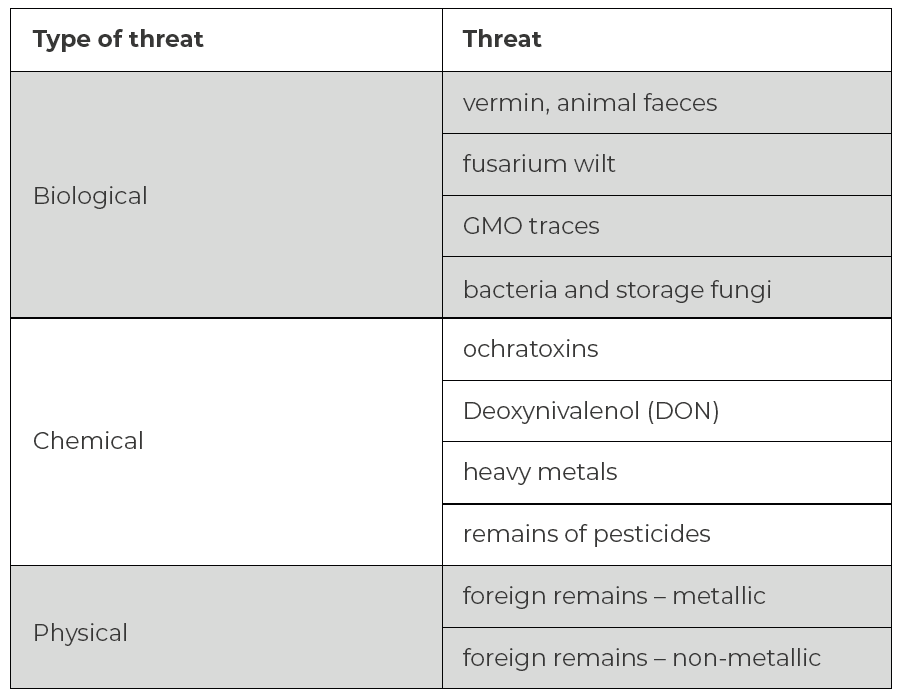By definition, critical points are locations in the production process that are critical to food safety. Within farms, which are very diverse, an analysis – identification of food safety risks – should be carried out and critical points should be marked.
On each farm they may be positioned differently in the production process, hence an individual analysis for each farm is required.
Proper analysis and, above all, the conscious identification of hazards avoids many unexpected problems such as: grain with a diesel smell, machine parts or pieces of concrete in the goods, dead rodents, bird or pet droppings, etc.
Below is an example of a risk analysis for malting barley storage.

On the practical side, critical points are part of daily work and require reliable identification guided by experience, common sense and the ability to anticipate events that may cause a risk to food safety; of course, the aim of identification is to eliminate risks.
Example of critical point identification and action plan for the grain-to-storage supply chain:
- Phase: grain in bloom;
- Critical point – danger: Fusarium ear infection;
- Action: fungicide treatment.
- Phase: full maturity;
- Critical point: high grain moisture, weed infestation in the canopy;
- Action: pre-harvest moisture measurement – harvest at a storage moisture content of less than 14.5%, if not possible harvest wet grain.
